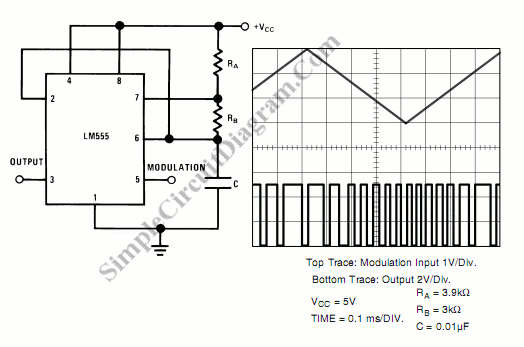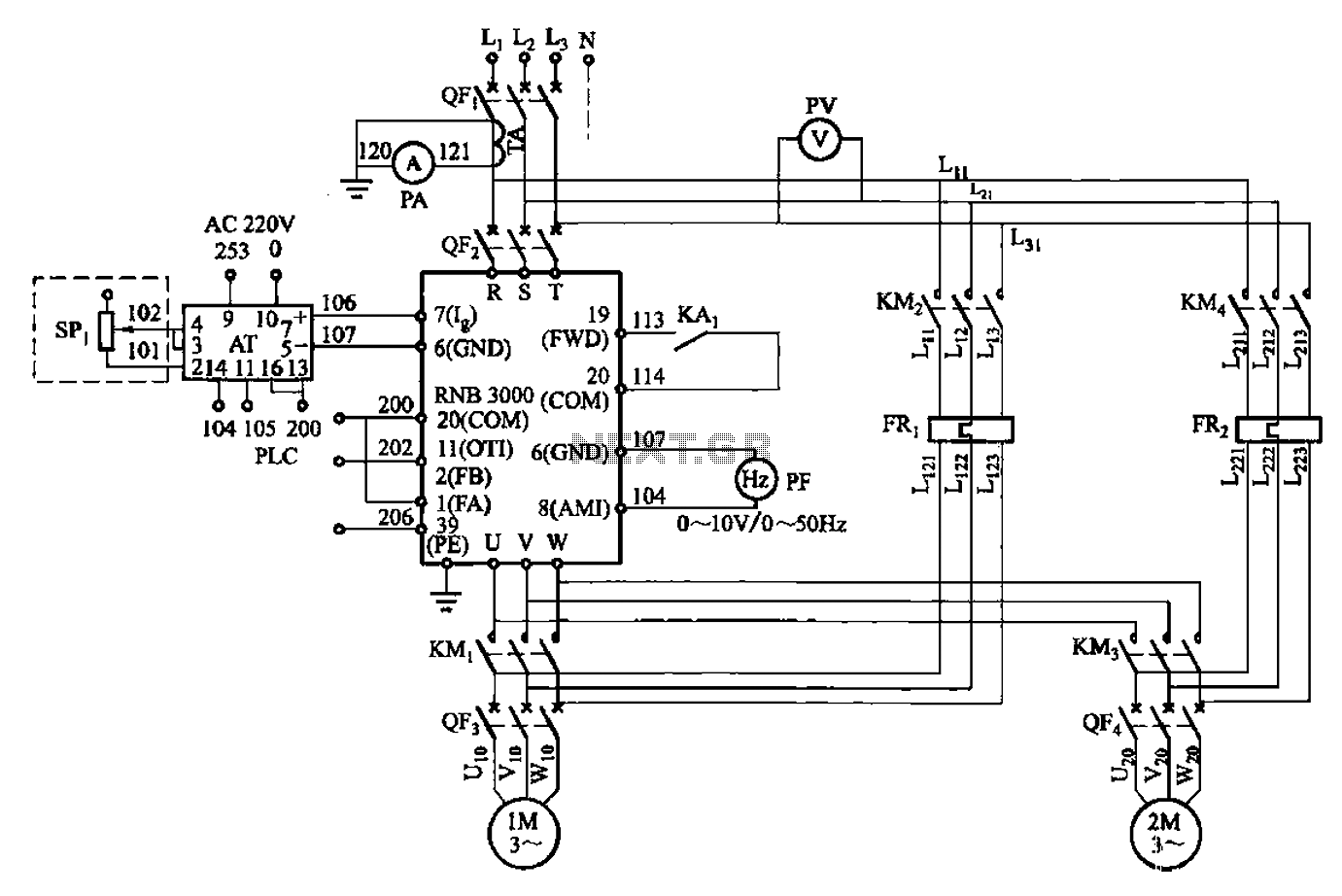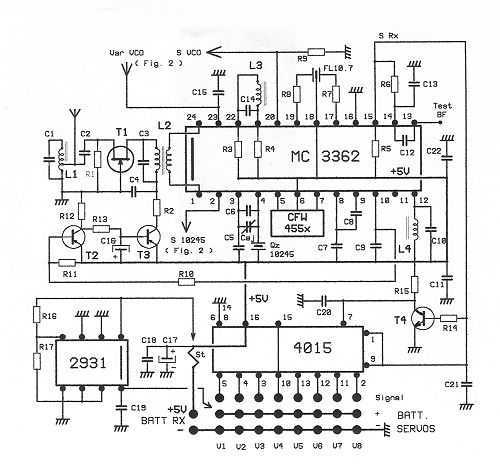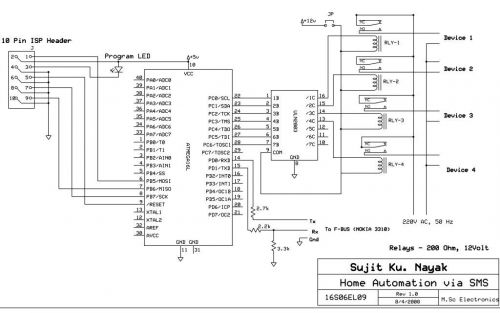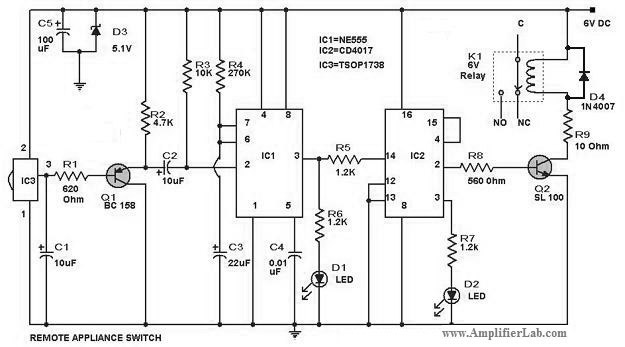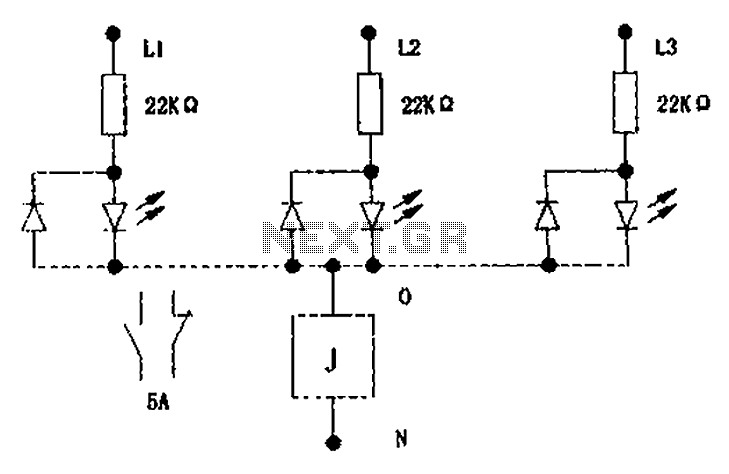
Radio Remote Control Using DTMF
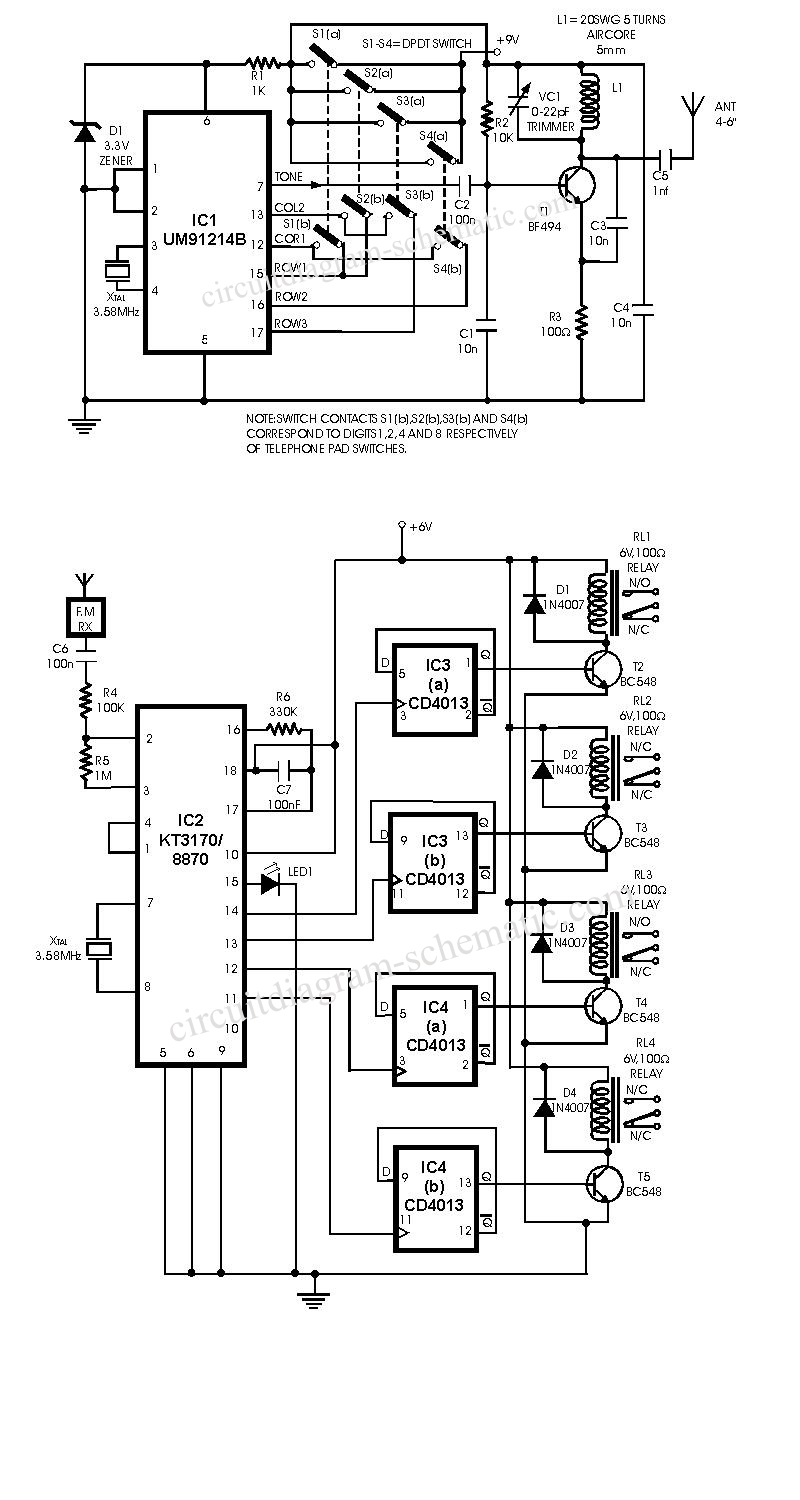
This circuit diagram represents a remote control system utilizing DTMF (Dual Tone Multi-Frequency) signals. DTMF signals, generated by pressing numbers on a telephone keypad, serve as the control mechanism for the system. The DTMF tones are employed to modulate the carrier frequency. At the receiving end, the modulated signal is processed to extract the DTMF tones, which are then decoded into BCD (Binary-Coded Decimal) format. This BCD output is used to control various devices by switching them on and off.
The circuit operates by transmitting DTMF signals from a standard telephone keypad to a receiver module. The receiver is equipped with a DTMF decoder that interprets the incoming tones. This decoder converts the DTMF signals into a binary format, specifically BCD, which corresponds to the digits pressed on the keypad.
The key components of the circuit include a DTMF generator, a modulator for the carrier signal, a receiver module that captures the modulated signal, and a DTMF decoder. The DTMF generator can be integrated into the telephone or can be a standalone device. The modulator is responsible for encoding the DTMF tones onto a carrier frequency suitable for transmission.
On the receiving end, the DTMF decoder analyzes the incoming signal, filtering out noise and isolating the DTMF tones. Once the tones are decoded into BCD, these binary signals can be fed into a microcontroller or a relay driver circuit. The microcontroller interprets the BCD signals and executes the corresponding commands to activate or deactivate connected devices, such as lights, fans, or other appliances.
This circuit is particularly useful in applications where remote control is needed without the requirement of complex wiring. The use of DTMF signals allows for a simple and effective means of communication, leveraging existing telephone infrastructure for control purposes. The design can be further enhanced by incorporating features such as feedback mechanisms, allowing users to receive confirmation of the commands executed.This circuit is a circuit diagram of a remote control using DTMF. Actuality we achieve the use of DTMF (dual tone multi-frequency) signals (used the phone to punch in numbers) as the influence of the code. DTMF tones used for the abundance accentuation of the carrier. At the receiver, this abundance articulate intercepted signal to access a DTMF tone in the terminal apostles.
Capturing DTMF is affiliated to the DTMF-to-BCD BCD is used to advocate achievement to switch-on and switch-off various e. 🔗 External reference
The circuit operates by transmitting DTMF signals from a standard telephone keypad to a receiver module. The receiver is equipped with a DTMF decoder that interprets the incoming tones. This decoder converts the DTMF signals into a binary format, specifically BCD, which corresponds to the digits pressed on the keypad.
The key components of the circuit include a DTMF generator, a modulator for the carrier signal, a receiver module that captures the modulated signal, and a DTMF decoder. The DTMF generator can be integrated into the telephone or can be a standalone device. The modulator is responsible for encoding the DTMF tones onto a carrier frequency suitable for transmission.
On the receiving end, the DTMF decoder analyzes the incoming signal, filtering out noise and isolating the DTMF tones. Once the tones are decoded into BCD, these binary signals can be fed into a microcontroller or a relay driver circuit. The microcontroller interprets the BCD signals and executes the corresponding commands to activate or deactivate connected devices, such as lights, fans, or other appliances.
This circuit is particularly useful in applications where remote control is needed without the requirement of complex wiring. The use of DTMF signals allows for a simple and effective means of communication, leveraging existing telephone infrastructure for control purposes. The design can be further enhanced by incorporating features such as feedback mechanisms, allowing users to receive confirmation of the commands executed.This circuit is a circuit diagram of a remote control using DTMF. Actuality we achieve the use of DTMF (dual tone multi-frequency) signals (used the phone to punch in numbers) as the influence of the code. DTMF tones used for the abundance accentuation of the carrier. At the receiver, this abundance articulate intercepted signal to access a DTMF tone in the terminal apostles.
Capturing DTMF is affiliated to the DTMF-to-BCD BCD is used to advocate achievement to switch-on and switch-off various e. 🔗 External reference
